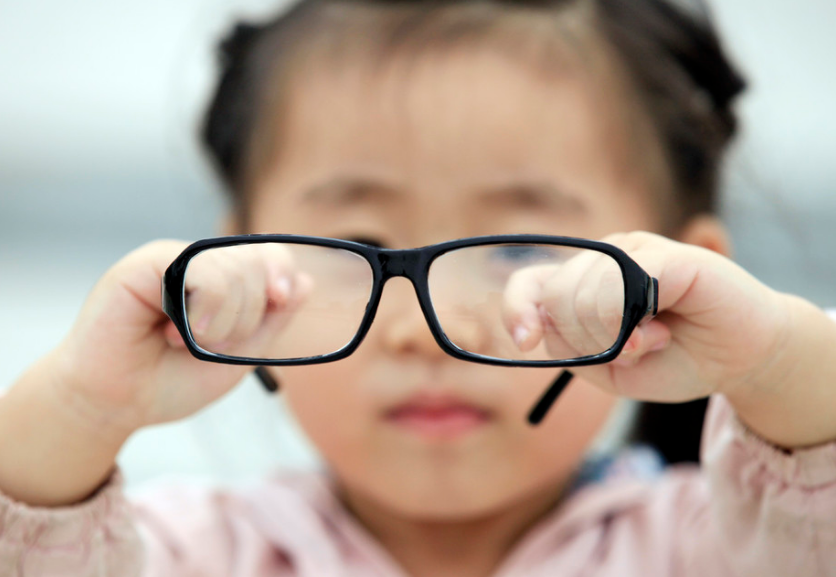If you are concerned that your child will be nearsighted, a new artificial intelligence model could help predict whether your offspring will need glasses.
如果你担心孩子会近视,一种新的人工智能系统可以帮助预测你的孩子是否需要佩戴眼镜。
Myopia is the most common visual impairment in children, and China has an unprecedented rate of nearsightedness.
近视眼是儿童最常见的视力障碍,我国近视眼的发病率已经达到前所未有高峰。
A recent World Health Organization report showed that about 600 million Chinese, almost half the population, are nearsighted, including more than 70 percent of high school and college students, and 40 percent of primary school children.
世界卫生组织最近的一份报告显示,中国约有6亿人患有近视,几乎占总人口的一半,其中包括70%以上的高中生和大学生以及40%的小学生。
Current approaches to curbing vision loss include eyedrops, glasses, contact lenses and surgery.
目前控制视力下降的方法包括眼药水、眼镜、隐形眼镜和手术。
However, while these can be effective, they have side effects, such as higher rates of recurrence, eye infections and other ailments.
虽然这些方法有效,但也有副作用,比如复发率高、造成眼睛感染和其他疾病。

If nearsightedness could be predicted, medical professionals could intervene with appropriate treatments to help reduce the risk of high myopia.
如果近视可以预测,医务人员就可以进行适当的干预治疗,降低高度近视的风险。
After analyzing 1.25 million eyesight records over three years, researchers from Zhongshan Ophthalmic Center at Sun Yat-sen University in Guangdong province have identified myopia development rules, and built an AI model to predict the condition in children and teenagers.
广东省中山大学中山眼科中心的研究人员在分析了过去三年125万份视力记录后,确定了近视的发展规律,并建立了人工智能模型来预测儿童和青少年的近视状况。
The study, published in the international journal PLOS Medicine, involved children ages 5 to 18 who had eyesight checks from 2005 to 2015 in eight of the largest ophthalmic centers in the southern province.
这项研究发表在国际期刊《公共科学图书馆·医学》上,研究对象是5岁至18岁的儿童,他们于2005年至2015年间在广东省最大的8个眼科中心定期接受视力检查。
The researchers discovered that nearsightedness usually occurs at age 7, and rapidly develops before age 10. It can grow to-3 diopters during the teenage years and up to-6 diopters in the 20s.
研究人员发现,学龄近视一般出现在7岁,在10岁之前迅速发展,青少年时期可以达到300度,20岁左右稳定在600度。
The researchers used age, the diopter and annual myopia progression rates as the main variables to develop an algorithm to predict degrees of myopia over 10 years and the possibility of high myopia before 18 years.
研究人员以年龄、屈光度和每年的近视进展率为主要变量,开发了一种算法来预测孩子未来10年的近视程度和18岁之前高度近视的可能性。
To test the model, the developers fed it about 687,000 eyesight records of more than 129,000 people.
为了测试这个模型,开发人员输入了超过12.9万人的68.7万条视力记录。
The diagnostic accuracy was 90 percent within three years, and 80 percent within 10 years. It can also predict high myopia eight years in advance, providing a scientific basis for intervention, study leader Liu Yizhi said.
诊断准确率在3年内达到90%,10年内达到80%。研究负责人刘奕志表示,该方法还可以提前8年预测高度近视,为干预近视提供科学依据。












